Once again, many eyes are on South Africa. After a massive BA.1 wave and no BA.2 wave, BA.4 and BA.5 are taking hold while they move into the winter season. In the past two weeks, cases have increased 173% and test positivity rate is high (20%).

Hospital admissions have also started increasing. Gauteng—the epicenter (once again)—has seen a 63% increase in hospitalizations in the past week, but thankfully started off at a very low baseline. While it’s still early to draw conclusions about the severity of the resurgence, positive signals are coming from hospitalization data: 23% of admissions are for severe disease with BA.4/5 infection (vs. 34% with BA.1 and 64% with Delta). Case fatality rates also remain low compared to previous waves.
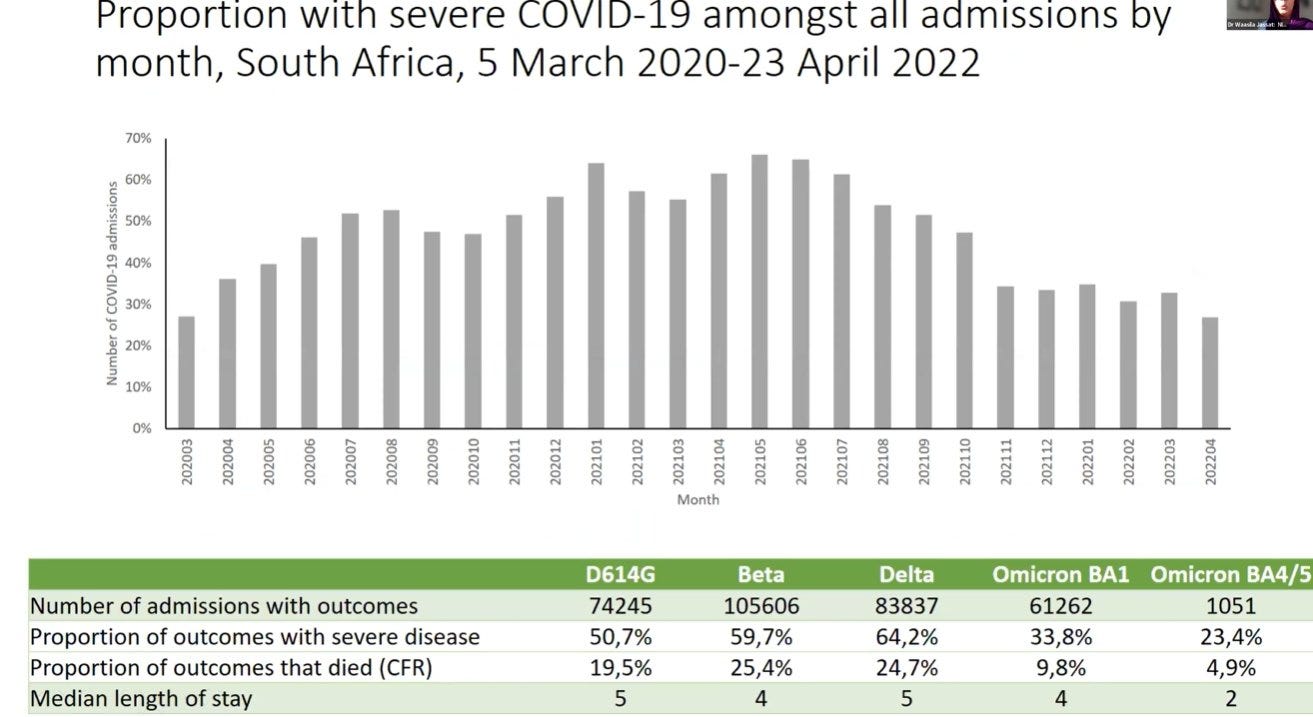
We recently received critical information from the Sigal lab in South Africa about BA.4 and BA.5 (preprint here). The team measured antibody protection against BA.4 and BA.5 among people infected with the original (BA.1) Omicron. Immune escape from BA.4/5 was substantial. It was even more pronounced among unvaccinated compared to vaccinated (not boosted) people (5-fold difference).
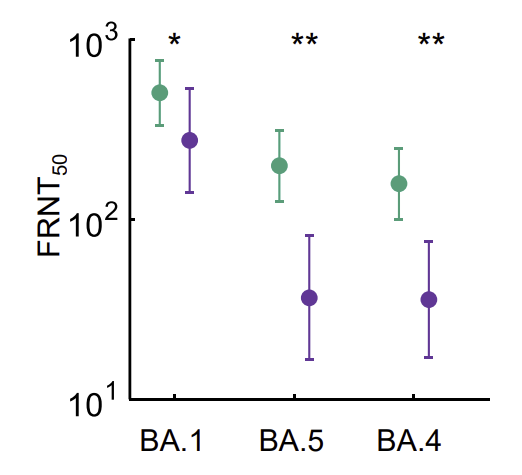
This combined with South Africa’s low vaccination coverage (36%) is driving the infection wave in South Africa. If “endemic” SARS-CoV-2 is 6-month infection waves, we are in for a wild ride. It’s important to note that this study measured antibodies (our first line of defense) and not B-cells or T-cells (our second lines of defense). Because we know T-cells work very well against the original Omicron, we expect continued protection against severe disease and death among vaccinated people.
United States
Back in the U.S., cases continue to slowly rise with a 49% increase in the past two weeks. The uptick is due to a mixture of Omicron sublineages. BA.2.12.1, in particular, has mutations to further escape immunity, so it’s quickly gaining speed because it’s finding new pathways of infection. BA.4 and BA.5 have been detected in the U.S., but are still at very low levels of detection. We expect this to change in coming weeks.
While the Northeast region is still the case leader, the most noteworthy case accelerator is Puerto Rico with a 271% case increase in the past 14 days. Virologists confirmed that BA.2 is responsible for the uptick, as opposed to BA.4 or BA.5.
If the same viral lineage is circulating in the Northeast, why is Puerto Rico getting hit particularly hard? There could be several reasons, like behavior differences. Also, seroprevalence data shows striking differences: 35% of the Puerto Rico population has some infection-induced immunity compared to 62% of the New York population.
Unfortunately, hospitalizations in Puerto Rico are following cases and have increased 120% in the past 14 days (daily average of 212 hospitalizations). Deaths have so far increased 10%. While Puerto Rico has one of the highest vaccination rates in the U.S. (77%), it’s not 100%, and many people will continue to get swept up in the waves.
Looking towards the Northeast, wastewater is having a bumpy ride. Metrics in Boston, for example, increased very clearly due to BA.2, then started falling, then started increasing again. This may be due to the introduction of BA.2.12.1. Time will tell. Compared to the original BA.1 wave, this increase is relatively minor thus far.
Hospitalizations continue to lag cases in the U.S., but are increasing at a much slower rate (15% increase in the past 14 days) than cases. In New York, hospitalizations trended upwards but the absolute number remains low (6 per 100,000), and close to 100% of hospitalizations are among unvaccinated people.
Deaths in the U.S. continue to nosedive. Today we’re reporting 321 deaths per day, and we expect to reach the milestone of 1,000,000 total deaths soon. The Kasier Family Foundation updated their preventable deaths analysis last week. Since vaccines were readily available (June 2021), we’ve lost 234,000 Americans to SARS-CoV-2 that could have been prevented. In March alone, we lost 14,800 Americans to a vaccine-preventable disease.
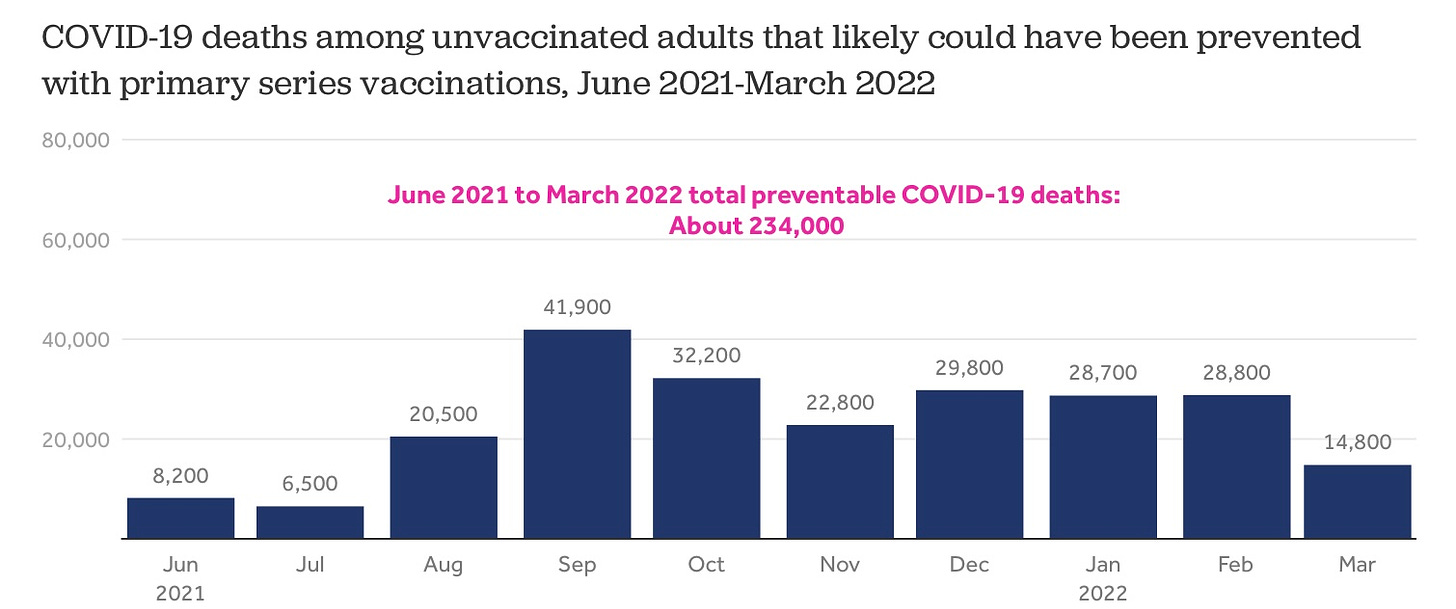
Thanks to base rate bias (see my previous post here), the more people vaccinated the more deaths we will see among vaccinated. This also shows that vaccines aren’t perfect, and transmission is, in fact, still important to track.
Bottom line
We are getting mixed signals across the world and across the U.S. as different Omicron mutations take hold. We are confident, though, that vaccines continue to protect against severe disease and death. But keeping transmission low is still important so vulnerable populations don’t get swept up in the waves.
Love, YLE
Personal update
In full transparency, my professional affiliation has changed. Today is the first day I am not a full-time University professor. I made the incredibly difficult decision to move from academia to health policy. As Director of Population Health Analytics, I will strive to elevate research for more data-driven policy to improve the health of Americans. I am joining a non-profit, non-partisan policy think tank (more here). This move also enables my little family to move back to my home—Southern California! I’ll continue this newsletter on the side, and I will continue as an adjunct Assistant Professor at UTHealth so I can continue to teach and work with students (my two favorite things). I still have no conflicts of interest to report.
“Your Local Epidemiologist (YLE)” is written by Dr. Katelyn Jetelina, MPH PhD—an epidemiologist, biostatistician, wife, and mom of two little girls. During the day she works at a nonpartisan health policy think tank, and at night she writes this newsletter. Her main goal is to “translate” the ever-evolving public health science so that people will be well equipped to make evidence-based decisions. This newsletter is free thanks to the generous support of fellow YLE community members. To support the effort, please subscribe here:





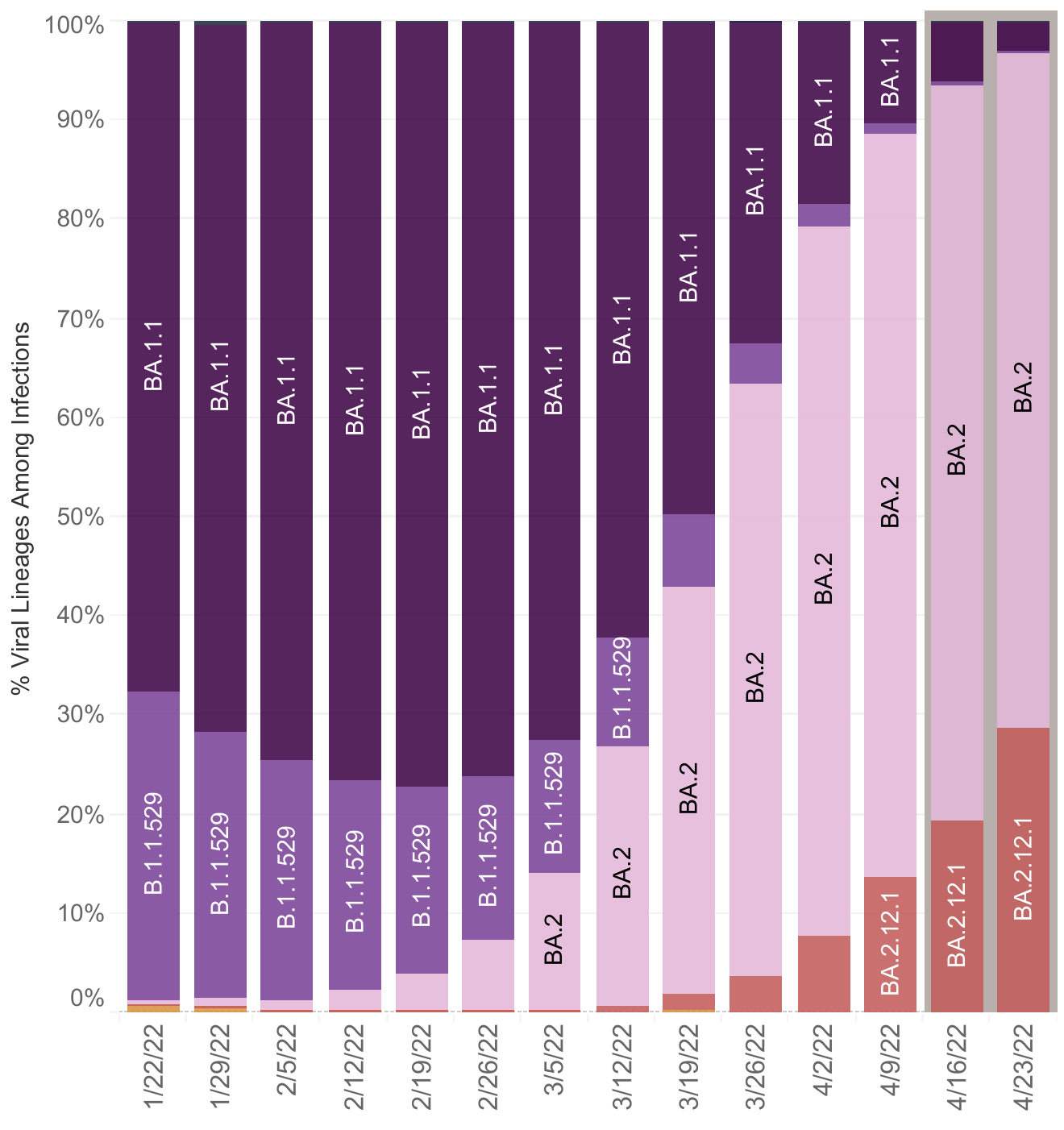

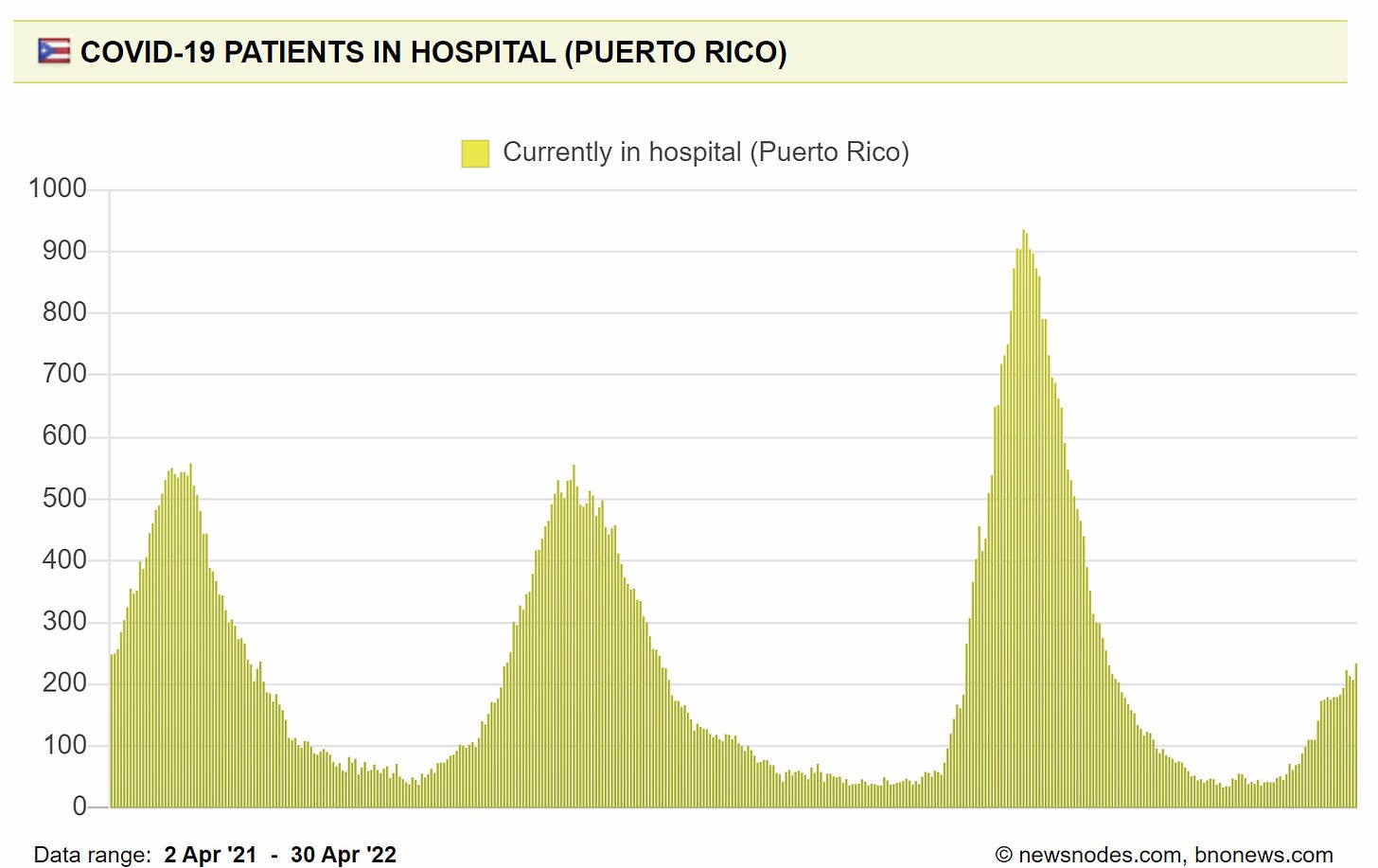
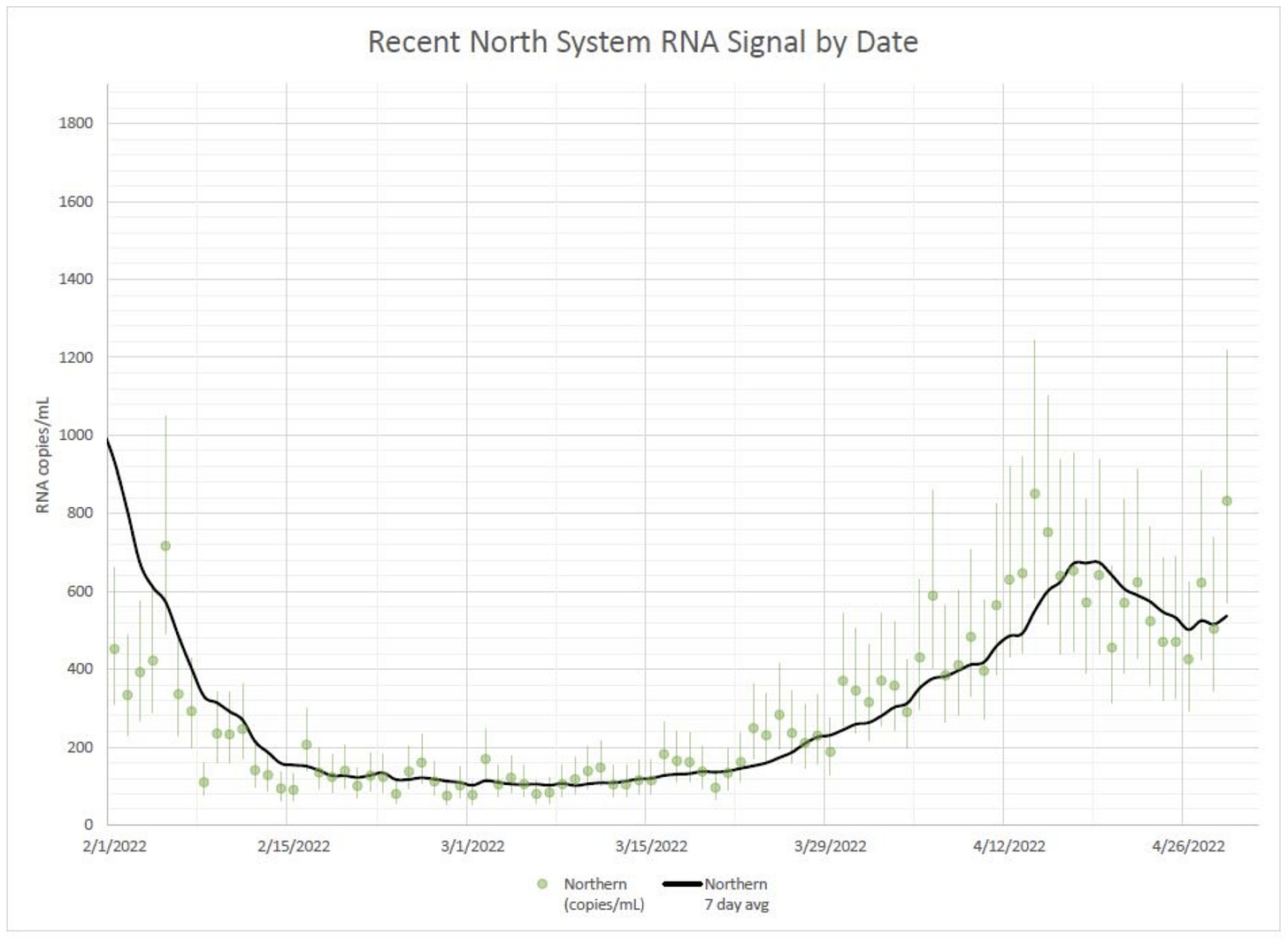
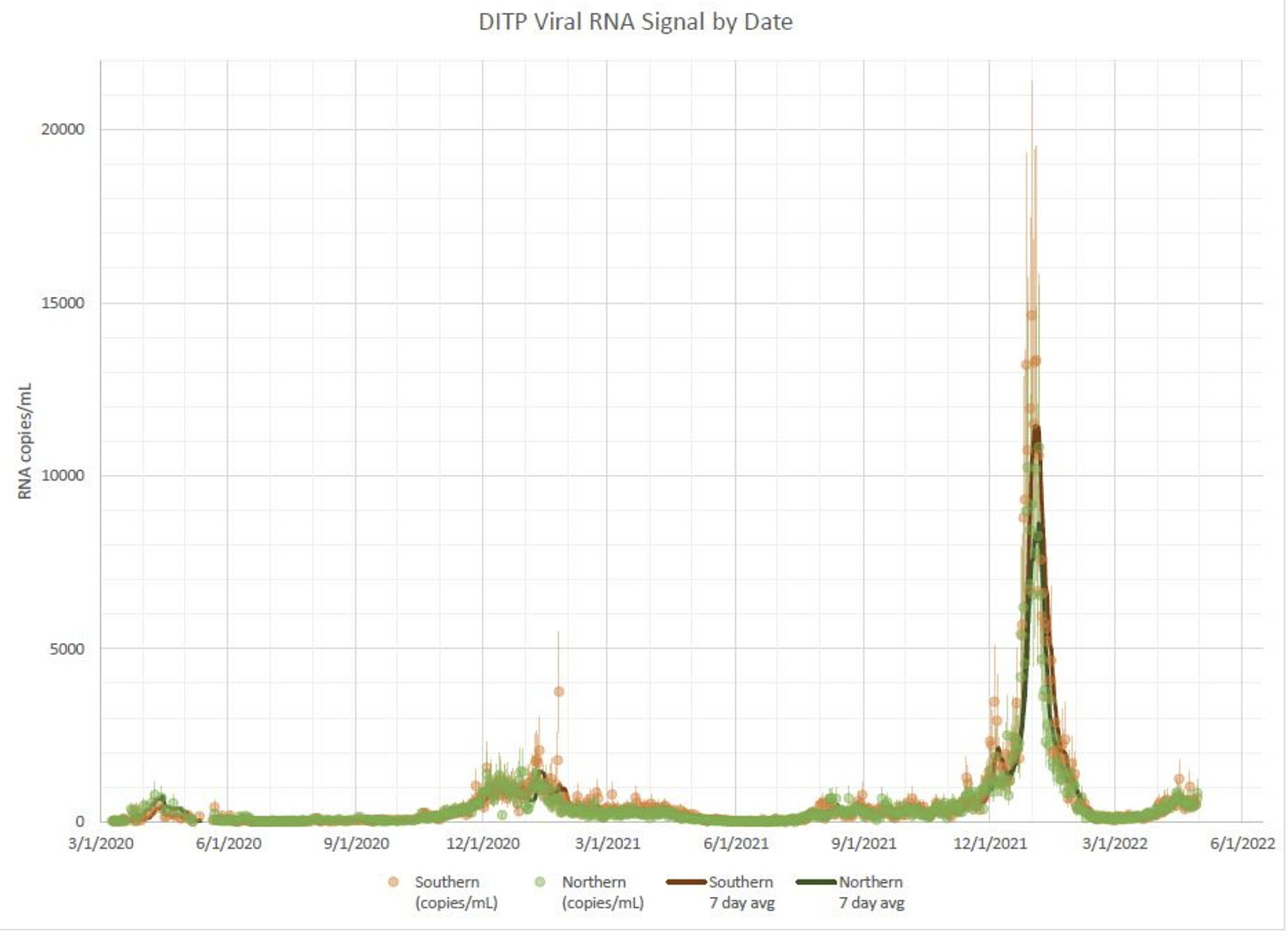


Congratulations on new job. question: how are sensitivity and specificity of tests (antigen and NAATs) holding up with the new variants? See a lot more people with covid or flu like symptoms testing negative for both... wonder if rates of false negatives increasing with changes in variants.
Katelyn, I don't care where you work (although YAY! for moving back home!) as long as you keep the good epidemiology 411 coming our way! :)